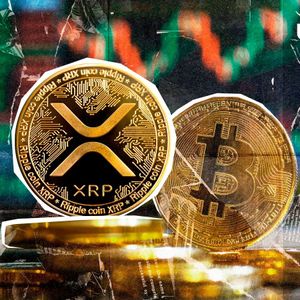A recent post from Britto, a community dedicated to Arthur Britto, co-creator of the XRP Ledger (XRPL), offers a detailed explanation of the differing roles of XRP and stablecoins in the digital financial ecosystem. Through a straightforward comparison, the post seeks to correct misconceptions about XRP being replaced by stablecoins. XRP vs. Stablecoins: The Ultimate Showdown "Stablecoins are replacing XRP!" That's like saying Google Maps replaced Wi-Fi. You're confusing the app with the infrastructure. Let's dive in. https://t.co/kMc897E25K pic.twitter.com/jKCHUMd76U — Britto (@BrittoXrpl) May 1, 2025 Misunderstanding the Function of XRP and Stablecoins The tweet addresses a common claim: that stablecoins are replacing XRP. According to Britto, this view misunderstands the fundamental purpose of each asset. Comparing the situation to confusing an application with the infrastructure it operates on, Britto frames XRP as the underlying connector — the “bridge currency” — in contrast to stablecoins, which it describes as digital versions of fiat currencies like the U.S. dollar or euro. Britto describes XRP as an “international translator” capable of facilitating cross-border transactions by enabling interoperability between different currencies. In contrast, stablecoins are portrayed as static stores of value, useful for holding but not designed to move value across systems. This distinction sets the foundation for the rest of the post, which explores the practical differences between the two assets. Real-World Application: XRP in Cross-Border Transactions To illustrate their point, Britto outlines a hypothetical scenario. A bank in Japan wants to send $10 million to Mexico. Using stablecoins such as USDC would require identifying liquidity partners, dealing with foreign exchange (FX) fees, and navigating compliance processes — all of which introduce friction and complexity. By contrast, Britto presents XRP, specifically when used through Ripple’s On-Demand Liquidity (ODL) product, as a more streamlined option. We are on twitter, follow us to connect with us :- @TimesTabloid1 — TimesTabloid (@TimesTabloid1) July 15, 2023 The transaction would automatically convert yen into XRP and then into Mexican pesos, all without the need for pre-funded accounts or multiple intermediaries. According to the post, this demonstrates the core utility of XRP as a bridge asset : its ability to move value efficiently across borders in real time. Liquidity and Decentralization: Key Differentiators Britto further emphasizes that liquidity — the ability to convert assets quickly at low cost — is more critical than stability in cross-border transfers. While stablecoins may offer low volatility, their need for localized liquidity pairs and centralized oversight makes them less efficient in global value transfer scenarios. In contrast, XRP is described as providing on-demand liquidity through a decentralized system that carries lower counterparty risk. This decentralization, according to Britto, offers an additional layer of reliability. Stablecoins remain dependent on centralized issuers and can be subject to restrictions such as freezing or blacklisting. XRP, as part of the XRPL, is not controlled by a central authority, offering a more trustworthy alternative for moving value globally. Ripple’s Multi-Asset Strategy and Final Takeaway The post also clarifies Ripple’s broader strategic direction. Ripple’s launch of a U.S. dollar-backed stablecoin, RLUSD , is not positioned as a competitor to XRP but as a complementary tool within its expanding suite of financial products. Britto likens this to adding a screwdriver to a toolbox with a hammer, underscoring that different assets serve different functions within a financial network. Britto reinforces the message that XRP and stablecoins are not interchangeable. Stablecoins are built for stability and storage; XRP is built for speed and transfer. Each has its place, and one does not replace the other. The post closes by rejecting binary thinking in financial innovation, asserting that the future of digital finance depends on applying the right tool for the specific task at hand. Disclaimer : This content is meant to inform and should not be considered financial advice. The views expressed in this article may include the author’s personal opinions and do not represent Times Tabloid’s opinion. Readers are urged to do in-depth research before making any investment decisions. Any action taken by the reader is strictly at their own risk. Times Tabloid is not responsible for any financial losses. Follow us on X , Facebook , Telegram , and Google News The post Are Stablecoins Replacing XRP? Expert Clarifies Roles In Digital Finance appeared first on Times Tabloid .


















